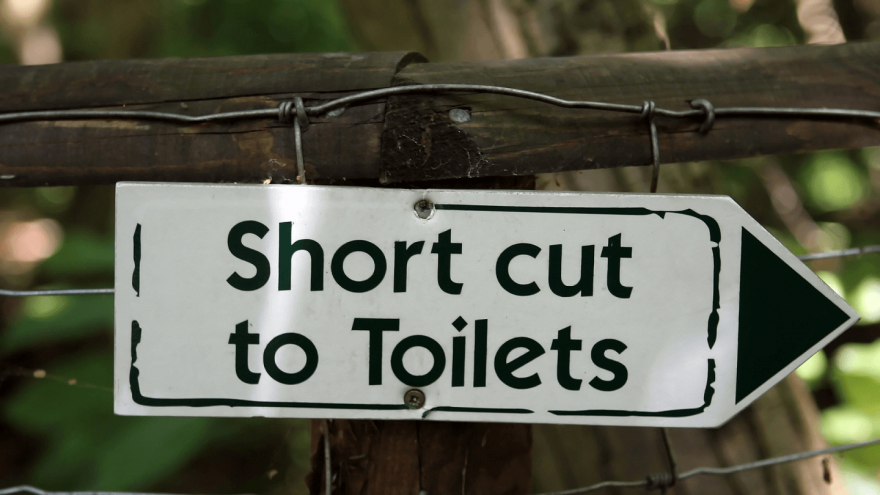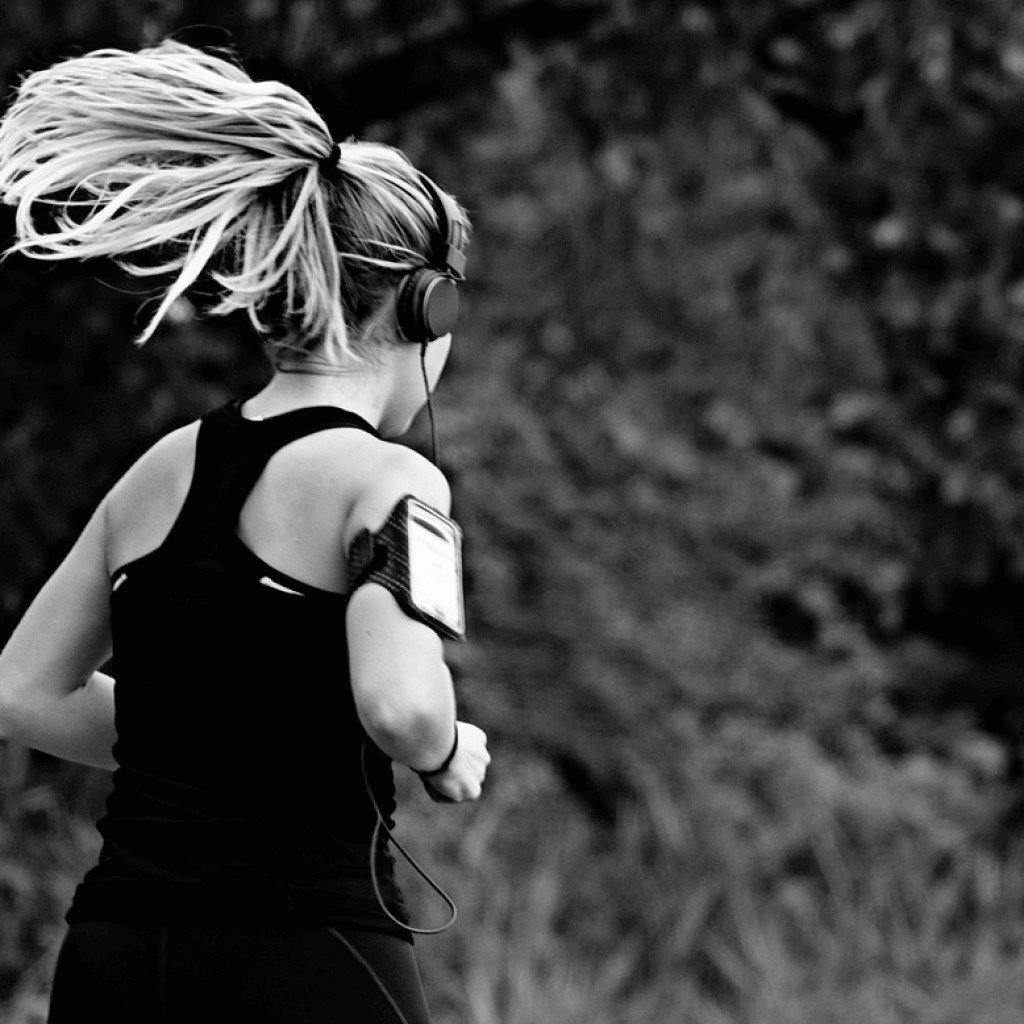Running And Urinary Incontinence: There’s Hope!

Running can get messy. With things like snot rockets, porta-potties and bowel movements often being the focal point of running group banter, it’s no wonder that non-runners choose to abstain instead. But despite the general openness of runners towards topics that would otherwise border on taboo, one topic has remained surprisingly hush-hush: The issue of battling urinary incontinence on the run.

And while many runners prefer not to share the details of this rather private battle, the condition is a lot more common than you’d think.
A surprisingly common issue
A study published in the Journal of Human Kinetics in 2014 looked at the prevalence of stress urinary incontinence in elite female athletes. It was found that, out of a total of 112 study participants, which included 55 elite endurance runners, a staggering 45.54% experienced urine leakage during sneezing or coughing. And out of those affected, only 29.46% of athletes weren’t bothered by these symptoms.
Possible causes of stress urinary incontinence
So what exactly causes stress urinary incontinence (i.e. incontinence caused by actions like sneezing, coughing or running) and why is it so prevalent in female endurance athletes? The answer lies in the functioning of the female body. In women, the muscles of the pelvic floor stretch backward from the pubic bone to the tailbone and from side to side between the hips. This stretchy structure then suspends organs like the bladder and uterus above the opening below.
However, factors like pregnancy, childbirth, hormonal changes (especially menopause), and gravity can, over time, weaken the pelvic ligaments and muscles. This then causes the entire structure to sag downwards, putting pressure on the bladder and creating traction in the urethra that eventually also pulls it down. Add to this extra pressure from sneezing, coughing or running, and you’re likely to sit with anything from a few drops of leaked urine to a full-on flood.

And while urinary incontinence is generally associated with a weak pelvic floor, some women have plenty of pelvic power but an inability to release it. In the latter instance tension that results from either injury or stress causes the pelvic floor to be constantly clenched. This, in turn, leads to muscle fatigue, which eventually leads to the same lack of support and leakage that is caused by weakness.
Practical tips and tricks for running with urinary incontinence
And while urinary incontinence is a fairly common condition among especially female runners, certified pelvic rehabilitation practitioner, Susie Gronski, stresses that there’s a big difference between what’s common and what’s normal. “You don’t have to run wetting yourself,” Gronski says. And if you do? Don’t despair! There is help. Here are some tried and tested ways to put the joy back into running if you’re struggling with urinary incontinence:
1. Get to the bottom of what exactly is causing the problem and address that
Kegel exercises are commonly recommended for women who suffer from urinary incontinence. And while a consistent Kegel program is an excellent way to help strengthen a weak pelvic floor, it won’t solve the issue of incontinence for women who are suffering from pelvic tension instead. It is therefore vital that you get to the bottom of what is causing incontinence in your specific case.
But how do you know on which end of the spectrum your pelvic floor strength lies? Experiencing pain during intercourse or having trouble inserting a tampon could potentially indicate the presence of pelvic tension. Or, if you’re really unsure, get an opinion from your physician in this regard. Also note that, if your physician confirms that your symptoms are caused by a tense pelvic floor, deep breathing and relaxation exercises may benefit you more than Kegels.
2. Carefully manage your fluid intake
It goes without saying that you shouldn’t guzzle down big volumes of pre-run fluids if you want to avoid leakages on the run. Gronski warns, however, that restricting your fluid intake too much can also backfire. Not ingesting enough fluids may cause urine to become very concentrated in the bladder, which, in turn, may irritate the bladder’s sensitive lining. This can subsequently trigger the bladder to contract in an effort to get rid of the undiluted waste product.
So how do you know how much you should drink before a run? Certified women’s health physical therapist, Lauren Garges, recommends dividing your body weight by half and then adding 10% to 15% and using this as your baseline, in ounces, for daily hydration. She adds that you should monitor how this affects your mid-run leakage and adjust the volume accordingly. Garges also suggests sipping instead of gulping your pre-run fluids in order to optimize absorption.
3. Watch what you ingest
And it’s not only your water intake that you should carefully manage. Substances like caffeine (hello, pre-run coffee!), milk and carbonated beverages are known to sometimes irritate the bladder’s lining. So experiment with excluding these culprits from your pre-run ritual and see if it makes any difference to mid-run leaks.

4. Equip yourself with the right tools
Don’t be caught off guard by unexpected leakages while you’re still working on minimizing or resolving the problem. Incontinence underwear, like the Fannypants range, is specifically designed to be super absorbent and keep you comfortable on the go.
Products made for your period, on the other hand, including pads and pantyliners, scrunch up and chafe during a run and are therefore not ideal for dealing with urine leakage. Impressa, a tampon-like product made specifically for use by incontinence sufferers, may, however, be worth considering. Upon insertion, this product gently lifts and supports the urethra, thereby preventing urine leaks.
And if you still feel self-conscious about potential leakages even after taking these preventative measures, consider investing in a few dark-colored running skorts.
5. Carefully plan your running route
Always plan your running route in such a way that it makes provision for a mid-run bathroom break. Even if you don’t feel the urge to go, void your bladder anyway in order to avoid potential leaks during the latter half of your run.

6. Get to a healthy weight
Being overweight places additional stress on the bladder, which can potentially contribute to unwanted leakages. So be sure to reach and maintain a healthy weight.
7. Get professional help
While the subject may not be an easy one to discuss with your physician, doing so may change your life. Your doctor will potentially prescribe pelvic floor physical therapy, during which experts can ensure that you’re strengthening or relaxing the correct muscles. Alternative treatments, like working with increasingly heavy vaginal weights may also be recommended for extremely weak pelvic muscles.
Other treatment options include bladder-relaxing medication, nerve stimulation or even surgery. The latter option, referred to as a suburethral sling, involves the insertion of a piece of synthetic tape under the urethra for support. The procedure takes only 10 minutes, with minimal recovery, and some patients even report being back to running, with substantially fewer urine leaks, within as little as three weeks.
Take action and keep moving
So don’t let urinary incontinence rob you from the joys of running. Get to the bottom of the problem, take action and get help. There’s no reason to hang up those running shoes just yet!

Sources
- , 8 Practical Ways to Deal With Pee Problems on the Run, Online publication
- , Incontinence: a common problem for female runners, Online publication
- , How to beat urinary incontinence, Online publication
- , Four steps to resolve incontinence while running, Online publication
- , Prevalence of Stress Urinary Incontinence in Elite Female Endurance Athletes, Scientific journal
Latest Articles
 Is Running on a Treadmill Easier Than Running Outside?Runners have their own preferences, whether it is treadmill running, running outside on the road, or exploring trails. So...
Is Running on a Treadmill Easier Than Running Outside?Runners have their own preferences, whether it is treadmill running, running outside on the road, or exploring trails. So... Is It OK to Use Trail Running Shoes on the Road?While trail running shoes can be used on roads, especially in situations where a runner encounters mixed terrains or pref...
Is It OK to Use Trail Running Shoes on the Road?While trail running shoes can be used on roads, especially in situations where a runner encounters mixed terrains or pref... How to Fix Sore Quads After Running?Rest, ice, gentle stretching, and over-the-counter pain relievers can help soothe sore quads after running. Also, ensure ...
How to Fix Sore Quads After Running?Rest, ice, gentle stretching, and over-the-counter pain relievers can help soothe sore quads after running. Also, ensure ... 10 Fruits With The Most Electrolytes to Replace Sports DrinksThese fruits are high in electrolytes such as potassium, magnesium, and calcium, essential for hydration, muscle function...
10 Fruits With The Most Electrolytes to Replace Sports DrinksThese fruits are high in electrolytes such as potassium, magnesium, and calcium, essential for hydration, muscle function...

